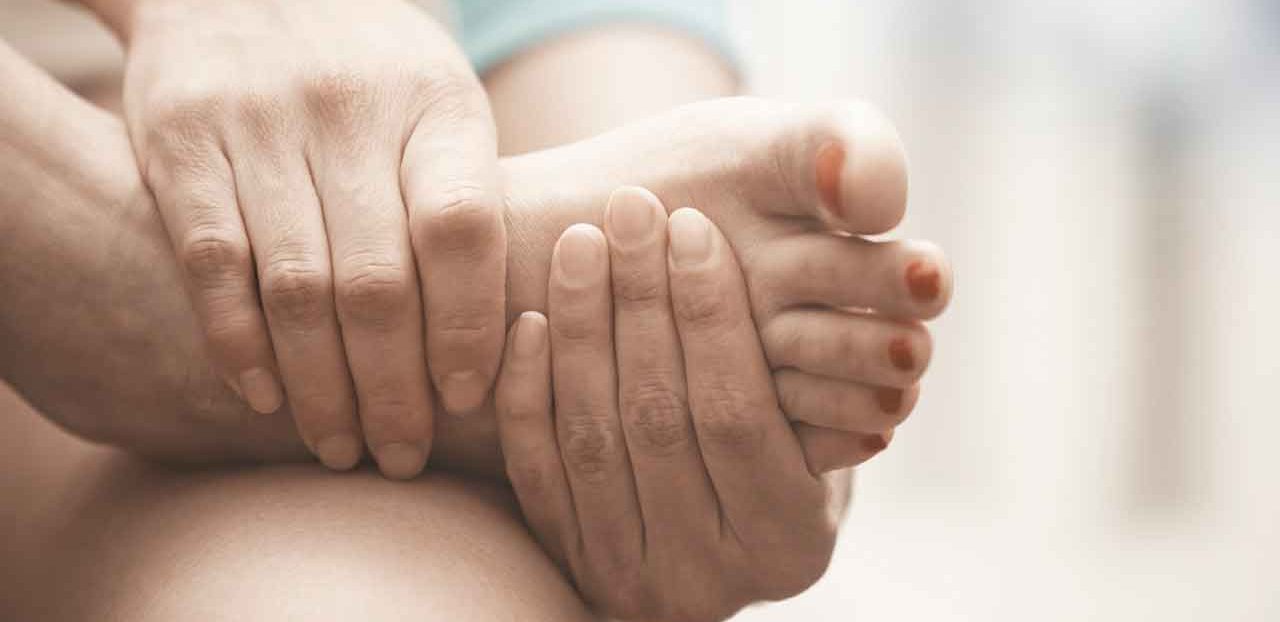Your Feet Support You, So Support Your Feet

Many people ignore foot pain even though it can get in the way of walking or exercise and lead to bigger problems. Here’s how to protect your feet.
You may not look at them closely enough to realize it, but your feet are marvels of anatomy and mechanical engineering.
Every foot has 26 bones, 33 joints, and more than 100 tendons, muscles, and ligaments. Those parts work together to help you take, on average, 8,000 to 10,000 steps per day. That’s 115,000 miles over a lifetime, or four times around the circumference of the Earth.
YOU MIGHT ALSO LIKE: Sound Technology Can Zap Foot Pain
Every time your heel lifts off the ground during a step, your toes carry one half of your body weight. In one day of normal walking, the total forces on your feet can be hundreds of tons, or the average weight of a loaded cement truck.
It’s crucial for your health to take good care of your feet.
Have good foot hygiene
Scrub your feet well, including between your toes. You should also make sure you:
- Dry your feet well.
- Moisturize and file hard skin.
- Cut toenails carefully.
- Shop for shoes in the afternoon (when your feet are at their largest).
- Change your socks daily to keep your feet fresh.
- Wash your feet carefully if you walk barefoot in communal areas like steam rooms and pools.
Even in the summer, you need more support than flip flops.
If you're over 60 or have type 2 diabetes, foot care becomes even more important. As you age, your skin thins, foot joints begin to stiffen, and your feet become more vulnerable to the cold.
Diabetes can cause you to lose feeling in your feet, called diabetic neuropathy. If you don’t notice cuts or sores, they may become infected. It’s essential to make a routine of inspecting your feet.
Don’t ignore pain
Foot pain is most common in women and people with obesity; it increases with age. It can happen at any age to anyone, however.
Around the world, estimates suggest that 9 to 30 percent of the population may experience foot pain at any time. Having heel pain — or plantar fasciitis — can be especially distressing, making some people panic. About 80 percent of people with rheumatoid arthritis may feel foot pain.
If your problem is serious, it’s important to see a podiatrist, doctors who specialize in feet and ankles.
If your pain is only mild but persistent, you might try a an assessment tool from the Institute for Preventive Foot Health that can help you determine what you can do.
Many common problems cause foot pain
Fallen arch
Overuse or sports can injure the tendon that connects the calf muscle to the inside of your foot, causing pain in your arch or ankle. An orthotic, a foot pad or heel insert, could help. In a severe case, you might need surgery.
If the nerve on the inside of your ankle is pinched, you may have a burning sensation called tarsal tunnel syndrome. The problem is sometimes related to a fallen arch or another tendon problem.
Fallen arches can also cause pain in the bony part near your pinky toe, on the outside of your foot, a condition called cuboid syndrome.
Arthritis
Younger people who stay athletic year-round can wear out their joints. To prevent problems, use the right footwear, and give yourself breaks.
Osteoarthritis in feet is common with age. You might feel the stiffness at the base of your big toe or in your ankle.
Arthritis in your big toe joint is sometimes called turf toe, so named because football players can hurt that joint when their cleats get stuck in turf.
Gout
Gout, a painful condition, is another form of arthritis. It could be hereditary. Your toe joint will be red, swollen, and sensitive to touch.
See both a podiatrist and your primary care doctor to determine the cause.
Plantar fasciitis
Tension on your heel can lead to inflammation in the ligament that runs from your heel along the bottom of your foot. You’ll feel a sharp stabbing pain in your heel.
Try over-the-counter painkillers, ice, and soaking your feet. See if a doctor if home remedies don’t help.
Bunions
A bump on the joint of your big toe can become painful. You can also get a bunion on the side of your pinky toe.
Shoes don’t cause the condition, but they can aggravate it.
Hammer toe
If your toe turns into a claw-like shape with a bend in the middle (called hammer toe), you may get pain as it rubs against your shoes, and your toe may become infected.
Tendonitis
A dull ache and mild swelling might occur if you inflame a tendon in your ankle or foot, usually because you didn’t wear the right shoes or exercise on a hard surface.
Rest should help. A physical therapist can also show you exercises for tendonitis.
You can strain or sprain your ankle without realizing it. Treat a strain or sprain with rest, ice, compression, along with elevating your foot. You should feel better within a week or so.
Wear the right shoes
If you have narrow feet, say a “B” width, buy shoes with that width. Wide uptown kickers may look good at your local club, but you’re likely to come home with sore, chafed feet.
You should also wear shoes specific to your sport. Get running shoes for running — and better yet, buy them fitted to adapt to a natural tendency for your feet to pronate, or turn inward or outward.
The American Podiatric Medical Association website offers advice on shoes for specific sports.
Updated:
August 31, 2023
Reviewed By:
Janet O’Dell, RN